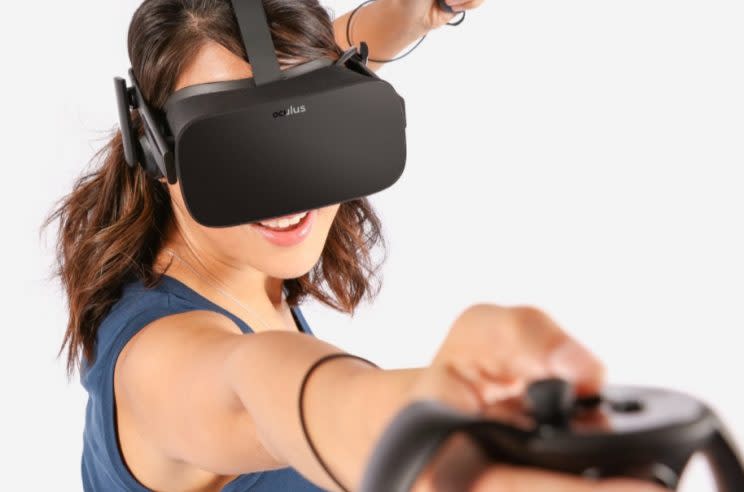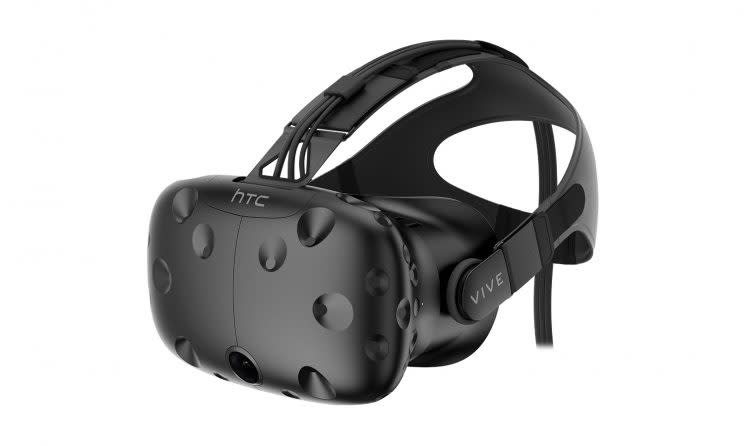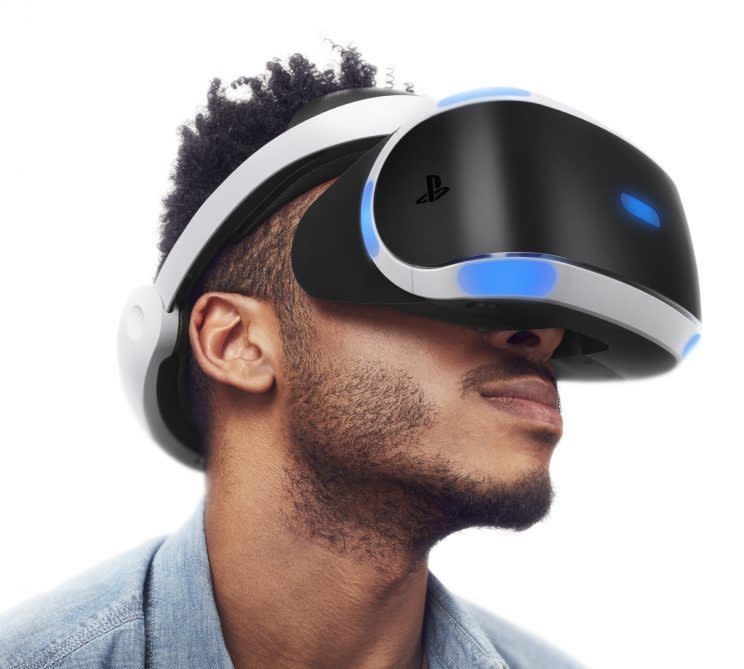How VR will win you over in 2017

Out of all of the major tech trends in 2016, the biggest was the birth of mainstream virtual reality systems. Unlike the massive rigs of the early ‘90s that you could only find in dedicated arcades, headsets like the Oculus Rift, HTC Vive and PlayStation VR helped bring VR into consumers’ homes around the world.
But these systems are all still in their infancy. And as much as tech experts, yours truly included, touted 2016 as the year of VR, things didn’t exactly pan out that way. Facebook’s (FB) Oculus, HTC and Sony (SNE) are incredibly tight-lipped as to how many VR headsets they’ve sold so far, but according to IDC Research’s Lewis Ward, the three systems will have likely sold about 800,000 units this year
While those sales aren’t a exactly a bust, Ward considers them “marginally disappointing.” By comparison, Samsung, which also keeps its sales numbers a secret, says millions of people have used the Gear VR. IDC, meanwhile, estimates that 700,000 gaming households have purchased the headset.
Hopes are still high for at-home VR systems, though. Back in May, Forrester Research’s J.P. Gownder estimated that there will be about 52 million virtual reality headsets in the wild by 2020 and that 32% of households with VR systems will have one high-end setup and one phone-based device. So how can the market mature in 2017?
Proving it works
My job provides me with the unusual opportunity to try the biggest technologies on the market before most people even get to touch them. So I can attest to the fact that the Rift, Vive and PSVR are impressive pieces of technology.
Gownder, though, explains that people have been burned by VR in the past, which can make them hesitant to spend their cash on new devices. Early VR systems didn’t live up to the hype and the industry floundered as a result. Consumers were promised the ability to step into virtual worlds and experience things they never thought possible, but were instead met with ungainly polygons and ugly graphics.
The fear among consumers is that headsets like the PSVR, Rift and Vive, which retail for $400 to $800, will be nothing more than passing fads. And you can’t blame them for such skepticism. One need look no further than the incredible rise and fall of 3D televisions for an example of a tech craze that came and went in a flash.

In an IDC survey of about 7,000 likely VR consumers, 23.4% said the visual quality of VR systems is still the most important factor when it comes to their purchasing decision. Oculus, HTC and Sony have tried to get in front of this type of hesitance by displaying their devices at big-box retailers and hosting nationwide tours. But gaining consumers’ trust will simply take time.
Bringing down the price
Let’s face it: Virtual reality systems are crazy expensive. The HTC Vive costs $800, while the Rift can cost as much as $880 with additional motion controllers and a third camera sensor for room-scale VR. Sony’s PSVR costs $400, but if you don’t have a PlayStation Camera or PlayStation Move controllers that cost grows to $500. What’s more, the Vive and Rift need powerful PCs to do the kind of graphical heavy lifting needed to bask your eyes in all of that sweet VR goodness. Sony’s PSVR requires a PlayStation 4, which is another $250.
According to IDC’s Ward, cost is the No. 1 concern among potential VR consumers, a fact that’s reflected in the demographics of current owners. As it stands, 40% of Rift and 38% of Vive customers live in households that make more than $100,000 a year.
But companies like Oculus are already working to bring pricing under control. When the Rift was first announced, consumers had to expect to lay out at least $1,000 for a PC capable of running the headset. Since then though, Oculus announced that it is working with PC makers to ensure its system runs on PCs priced as low as $500. That’s a significant improvement.

Other companies are also working to lower the entry price to the world of VR. Both Intel and Microsoft are working with third-party OEMs to produce headsets that are more affordable and won’t need to run on PCs. Microsoft’s solution is more of a mixed reality setup similar to its HoloLens headset, but the concept of lowering costs is the same.
Making compelling content
The reason you’d consider buying a VR headset in the first place is the content. But so far, much of what I’ve seen and experienced in terms of virtual reality systems has felt like little more than tech demos. I’ve yet to play a game or use any other interactive application that I could see myself enjoying for longer than an hour. And that’s a big problem.
If someone is going to drop $1,000 on a headset and the PC or game console to run it, they’re going to want to make sure they can use it for more than a day before tiring of it. To do that, game developers are going to have to create experiences that truly take advantage of the opportunities VR offers. Early examples of such games include “Job Simulator” and Google’s “Tilt Brush.” Both games, though short-lived, use VR to pull in gamers in a way that normal console or PC games can’t.
Simply porting regular games to VR won’t work, either. I can already play “Fallout 4” on my PS4 or PC; there’s no reason for me to play it in VR too. Gamers want unique experiences for their new headsets.
2017: The year of VR?
The initial thought that virtual reality would take off like a rocket in 2016 was hopeful at best and misguided at worst. Traditional video game consoles like the Xbox One and PS4 take time to reach critical mass on the consumer market, so it only makes sense that an entirely new form of interactive gaming would take just a bit longer. It’s true that 2017 will see plenty of improvements in the VR space, but it won’t be the year virtual reality becomes as ubiquitous as today’s gaming consoles. That’s still a few years off.
More from Dan:
Facebook’s latest Messenger update takes dead aim at Snapchat
Facebook’s Fundraiser lets you raise money for 750,000 charities this holiday season
Super Mario’s creator explains how ‘Super Mario Run’ will reach a new generation
Email Daniel at dhowley@yahoo-inc.com; follow him on Twitter at @DanielHowley.


